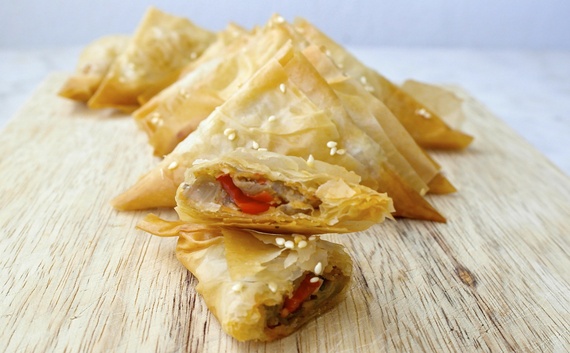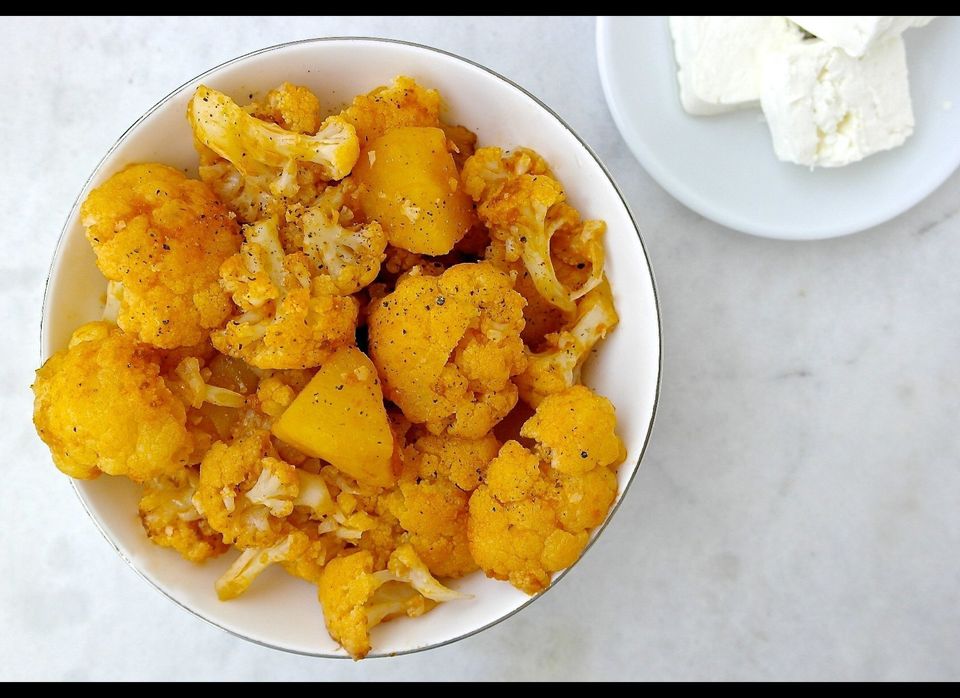Many of us associate the Mediterranean diet with summer, sea and sun. Sure, it's easy to eat more fruit and vegetables when it's hot out, but what happens when fall and winter come along? The rainy days, the cloudy skies, the longer nights... we want more "warm" foods, more comfort foods, more starch. It's easy to fall back on bad habits and eat less vegetables, more meat and more junk food. But have no fear, these tips will help you stay healthy by using the Mediterranean diet as a guide. After all, winter comes to the Mediterranean as well. Did you know that 80 percent of Greece is mountainous? It gets pretty cold here too. Here's what we eat:
1. Go With the Season
As the seasons change, so should our diet. Apart from the flavor as well as environmental issues, eating in season guides us to eating a variety of fruit and vegetables. I avoid produce that is not in season even though it is available at my local grocery store. For example tomatoes are available year round, but they certainly do not taste good. As a reminder, I keep a list of fruit and vegetables and their peak seasons on the refrigerator and check it before I go shopping.
2. Beans Are Your Friend
Beans are an important part of the Greek-Mediterranean Diet. Traditional ways of preparing them are in the form of thick soups such as this lentil soup or roasted beans. You can also consume them as a salad using olive oil and lemon as a dressing. Beans are often also cooked together with fish.
3. Cruciferous Vegetables the Greek Way
A popular Greek winter dish is cauliflower cooked in the pot with tomato paste and olive oil, we eat it once a week during winter. You can also try it roasted. Broccoli also is great roasted with pine nuts and olive oil. You can also roast any type of root vegetable in olive oil, combine with some feta and bread and you have a complete meal.
4. The Right Salads
Forget the Greek salad when fall comes along. The Greek salad is as a good as the ingredients you use. A Greek salad made with pale wintery tomatoes is very unappetizing and does a disservice to this wonderful salad. Instead, make traditional Greek winter salads using romaine lettuce along with spring onion with olive oil and vinegar or cabbage salad that is made with shredded cabbage, carrots, a touch of garlic and an olive oil-lemon dressing.
5. Potatoes Not Just on the Side
Potatoes are always used to accompany meat but they are often made on their own such as the traditional Greek potato salad or potatoes with celery.
6. Go Green(s)
Greens also know as horta are often consumed in the winter. There are different varieties available in all seasons. Find what is available in your area, lightly boil them, add a splash of lemon juice, olive oil and enjoy them with a chunk of feta and bread. Traditionally, vegetables are also cooked together with rice with dishes such as spinach-rice or leek-rice or even cabbage-rice. The vegetables and rice are cooked together and served with olive oil and lemon (and feta).
7. Pies Can be a Complete Meal
Pies known as pites in Greek, are savory pies made with phyllo and usually a vegetable filling. Pites are ideal to use those winter vegetables. Not only are they fairly easy to make as you can find phyllo almost everywhere plus they last for days and freeze well. These can be a complete meal. Popular winter pies include the famous spanakopita, hortopita (pie with greens), pumpkin pie, leek pie and onion pie.
8. Frozen vegetables and canned tomatoes
During the winter frozen vegetables and stewed tomatoes or tomato paste play an important role in my kitchen. I occasionally will make Greek style lathera green beans and peas using frozen vegetables. At that point I will also use preserved tomatoes or tomato paste. Tomato paste in fact was also consumed regularly as part of the Mediterranean diet. Studies have shown that frozen vegetables maintain their nutritional value as they are frozen shortly after harvest. However, when you go with frozen, use only plain frozen vegetables, not a frozen meal which is often loaded with extra fats and other ingredients you don't want to be eating.
9. Fruit
Again, seasonal fruit is key. Sliced apple, sections of oranges and mandarins are what you usually find on the Greek table in the winter months. You can also opt for some dried fruit such as dried figs, apricots and prunes (dried plums).
10. Drink your Herbs
Greeks are known for drinking a lot of herbal teas during the cold months. Some of our favorites include chamomile, Greek mountain tea (tsai tou vounou), sage and linden. These teas are consumed sometimes with a bit of honey.
For more recipes, tips and information on the Greek-Mediterranean diet visit OliveTomato.com

